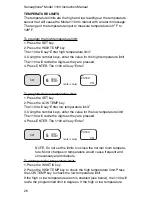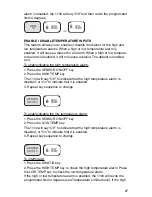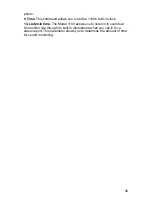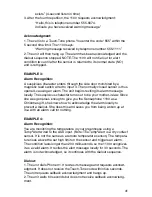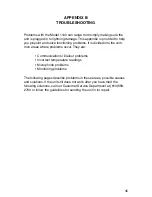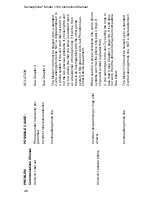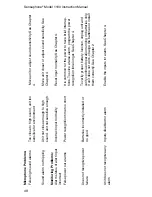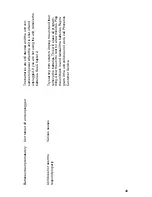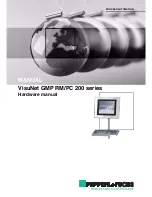
39
MONITORING PROGRAMMING
INPUT
CONDITION
SENSOR
ENABLED/DISABLED
OPEN/CLOSED
Input 1
water seepage
water detection sensor
enabled
N.C.
Input 2
humidity
humidistat
enabled
NO.
Input 3
intrusion
magnetic reed switch
enabled
NC.
AUX/4
temperature
Temp~AIert
enabled
NO.
LOW TEMP low temperature 6OºF
disabled
HIGH TEMP high temperature 9OºF
enabled
SOUND
high sound level
enabled
AC Power
power failure, recognition time: 180 sec
enabled
EXAMPLES
Each example is divided into three parts: Alarm Recognition, Dialout, and
Acknowledgment. Alarm Recognition refers to the events that occur when
the monitored condition changes to exceed acceptable limits. The
sensor’s normality changes state (i.e. normally open to closed) and the
1100 recognizes the condition. Dialout enumerates what happens during
the dialing sequence when an alarm condition exists. Acknowledgment
illustrates how an alarm is acknowledged.
EXAMPLE 1:
Alarm Recognition:
During a torrential rainstorm, water has seeped into your basement. The
water detection sensor placed on the floor senses this. The sensor
changes state from normally closed to open and trips an alarm. Input 1 is
enabled, so the unit enters the dialout sequence.
Dialout:
1. The Model 1100 waits 30 seconds (preprogrammed call delay time).
During this time, the unit recites the message: “Alert condition one exits.”
(Local mute disabled.)
2. After 30 seconds, the unit dials Phone #1(555-1111).
3. The unit receives no answer and hangs up.
4. The 1100 waits one minute (preprogrammed intercall delay time) and
then dials Phone #2 (555-1222)
5. The call is answered.
6. The 1100 recites the following message four times:
“Hello. This is telephone number 555-5674.
Alert condition one exists.”
(4-second listen in time)


